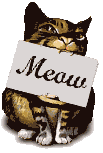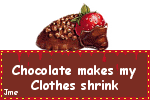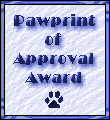CATS ON TUESDAY # 10
There are many poisonous / hazardous plants which may be dangerous for our four-legged feline friends ...
Always inspect the area in which your cat spends his/her time to be sure that none of these listed plants are accessable. Remember that both inside and outside must be "kitty-proofed" in order to have a safe, healthy cat.
HAZARDOUS INDOOR PLANTS
hydrangea (Hydrangea macrophylla)
daffodil (Narcissus)
paperwhites & other winter forced bulbs see (amaryllis)
philodendron (Philodendron spp.)
HAZARDOUS OUTDOOR PLANTS
american coffee berry tree (Gymnocladus dioica ( L. ) Koch)
arrowgrass (Triglochin martima)
baneberry (Actea rubra )
black locust (Robinia pseudoacacia)
bleeding heart (Dicentra spp.)
bouncing bet (Saponaria officinalis)
bloodroot (Sanquinaria canadensis)
bracken or brake fern (Pteridium aquilinum)
burning bush or fireweed (Kochia scoparia L. Schrad.)
bull nettle or horse nettle (Solanum carolinense)
buttercup (Ranunculus spp.)
carelessweed (Amaranthus palmeri S. Wats. )
castor bean (Ricinus communis )
cherries: black cherry, bitter cherry, choke cherry, pin cherry (Ricinus communis (Prunus spp.)
clover: alsike clover, red clover, white clover (Trifolium hybridum L. and other species)
cocklebur (Xanthium spp.)
creeping charlie or ground ivy (Glecoma hederacea L.)
curly dock (Rumex crispus L.)
Daffodil (Narcissus spp.)
daphne (Daphne spp.)
devil's trumpet see (Jimson weed)
delphinium (Delphinium spp.)
dogbane (Apocynum cannabinum)
dutchman's breeches (Dicentra cullaria (L.) Brenh.)
elderberry (Sambucus canadensis)
english ivy (Hedera helix L.)
ergot (Claviceps spp.)
fern see (Bracken fern)
fireweed see (Burning bush)
foxglove (Digitalis purpurea)
ground ivy (Glecoma hederacea L.)
hemlock - poison (Conium maculatum L.)
hemlock - water (Cicuta maculata L.)
horse chestnut, buckeyes (Aesculus hippocastanum L.)
horse nettle see (Bull nettle)
horsetails horsetails (Equisetum arvense L.)
hyacinth (Hyacinth orientalis)
hydrangea see (Hydrangea spp.)
irises (Iris spp.)
japanese yew (Taxus japonicus)
jack-in-the-pulpit (Arisaema spp.)
jimson weed (Datura stramonium )
kentucky coffee tree see (American coffee berry tree)
klamath see (St. Johnswort)
lamb's quarters (Chenopodium album L.)
lantana, red sage, yellow sage (Lantana camara)
larkspur see (Delphinium)
lily of the valley (Convallaria majalis)
lobelia, cardinal flower and indian tobacco (Lobelia spp.)
locoweed and Milkvetch families (Astragalus and Oxytropis spp.)
lupine (Lupinus)
mad apple see (Jimson weed)
mayapple (Podophyllum peltatum L.)
marijuana (Cannabis sativa)
milkweed (Asclepias syriaca L.)
monkshood, garden wolfbane, helmet flower, friar's cap, or soldier's cap (Aconitum spp.)
mountain mahagony tree (Cercocarpus montanus )
mushrooms (all outdoor varieties have potential of being toxic)
nightshade, black nightshade, or deadly nightshade (Solanum nigrum )
ohio buckeye or horse chestnut see (Aesculus glabraWilld.)
oleander (Nerium oleander L.)
pigweed see (Carelessweed)
poison ivy (Toxicodendron radicans L. Kuntze)
poison oak (Toxicodendron diversiloba)
poison sumac (Toxicodendron vernix)
poke, pokeberry or pokeweed (Phytolacca americana L.)
poppies: california poppy, iceland poppy, corn poppy, oriental poppy, and opium poppy (Papaver spp.)
purple mint (Perilla frutescens)
rhododendron (Rhododendron spp.)
rhubarb - leaves are toxic (Rheum rhaponticum)
rosary pea, jequirity bean, or precatory bean (Abrus precatorius)
snow-on-the-mountain (Euphorbia spp.)
staggerweed see (Dutchman's breeches)
star of bethlehem (Ornithogalum umbellatum)
st. johnswort (Hypericum perforatum L.)
stinging nettle (Urtica spp.)
stink weed see (Jimson weed)
stump tree see (Kentucky coffee tree)
sudan grass (Sorghum vulgare var. sudanense Hitchc.)
summer cypress see (Fireweed or Burning bush)
squirrel corn see (Dutchman Breeches)
sweet pea, tangier pea, everlasting pea, caley pea, and singletary pea (Lathyrus spp.)
thorn apple see (Jimson weed)
tobacco and tree tobacco (Nicotiana glauca )
tulip (Tulipa spp.)
wild onions (Allium spp.)
wild snakeroot (Eupatorium rugosum )
wolfsbane see (monkshood)
wisteria (Wisteria spp.)
yellow sage see (Lantana)
yews: english yew, japanese yew, western yew, ground hemlock, and florida yew (Taxus cuspidata)
HAZARDOUS HOLIDAY & SEASONAL PLANTS
amaryllis (Amaryllis spp.)
mistletoe (Viscum album)
christmas rose (Helleborus niger)
chrysanthemum (Chrysanthemum spp.)
crown of thorns (Euphorbia milii)
jerusalem cherry (Solanum pseudocapsicum L.)
poinsettia (Euphorbia spp.)
will not eat
vomiting
diarrhea
pale tongue or gums
swollen tongue
abdominal pain
convulsions
vomiting
diarrhea
pale tongue or gums
swollen tongue
abdominal pain
convulsions
Check out your gardens ... do you have any of these ???

















































































































20 comments:
Meow - No plants in my spot, but Cody has a thing for chewing on roses.
Peace & Hugs,
- Neo
Thanks for this Meow. Fortunately my parents cat, Tofflee, doesn't go out enough or exploring enough to find anything hazardous. She likes to sleep her days away. Alright for some!!
There is only one solution, I have to find 8 pairs of little boots (I don't know which color to choose, that's a problem) so that my cat family has to wear them before adventuring in this dangerous garden !
To assure you, here we don't have all these dangerous flowers and plants around so the surroundings are cat safe, lol !
You have compiled quite a list there. It seems it would be easier to avoid the inside list and never let the cats out!
Have a wonderful day!
*^_^
(=':'=) hugs
(")_ (")Š from
the Cool Raggedy one
Well, that certainly is an interesting list. Thanks, Meow. :)
Thanks for providing this very important list! My humans both have "black thumbs" and kill any plant that they try to grow, so we don't have any plants in the house. And since I only go outside on my harness and fully supervised, I don't have to worry about eating plants outside either.
Wow, I didn't realise so much plant life was dangerous to cats.
Thanks for that, Meow!
Have a good week...
I had no idea there were so many. I've always been careful with indoor plants that would bother them but our landscapes are covered with daffodils, irises, etc. Thank goodness mine have never bothered any of the flowers. Several of the things you mentioned just grow wildly here.
Thanks Meow. Our cats are indoor cats and we have no houseplants.
No indoor plants here, I kill them! LOL I even killed the cat grass! sigh..... D :)
I had to go all silk, between Sophia and the buns I have no real green stuff left in my house
It's good to know about the daffodils, as mine are starting to bloom outside and I often cut them and bring them in during the spring. As Socks likes to chew on plants, I will probably forego that pleasure this year. (My kitties don't get out if I can help it.) Thanks for the list!
Thank you for the important info!
If I may add: Jade Plants. They are a succulent. I know what they look like but I don't know their other names. I almost lost a cat that chewed on one that had been given to me as a gift. Thankfully she survived after a week at the hospital!
This is a long list, I hope they will never find one and eat it !
Thank you and have a great week !
Meow
Good gracious almighty! I have many of these in my garden and never knew they could harm any animals , I guess I better check out this summer and see what exactly I have , although I have never had any kitties eating any of my plants , no bite marks etc but one can never be to sure can one . well thanks for the info , I would just be devestated if a kitty got hurt so thanks again .
HUGS friend
hope your cooled off a litle !
Frozen friend ;0)
Greeneyes
WOW! Thank goodness I don't have a cat, lol.
Gidday Meow,
Blimey I'm glad I don't have a cat, as that's one heck of a bigggggg list to try and know what you may or maynot have in the garden, not to mention what things could be in neighbour's gardens. To be safe I guess it would be safer to keep the cat/s in the house.
Yep Mackay is a pretty town and worth the visit if in the area. Thanks for dropping by my blog.
Hi Meow..
Thanks for your visit while I was
having a wee break.
I think I might have a couple of
those plants,but our Burmese Thomas
is pretty good and stays away from
the garden. xx
Thanks everyone for visiting. It's a bit scary to think of all the plants out there that could cause our four legged friends problems.
Have a great week.
Take care, Meow
Even clover? But that's everywhere when its warm. Poor puddies! Can't be too careful with de puddies, though.
Post a Comment